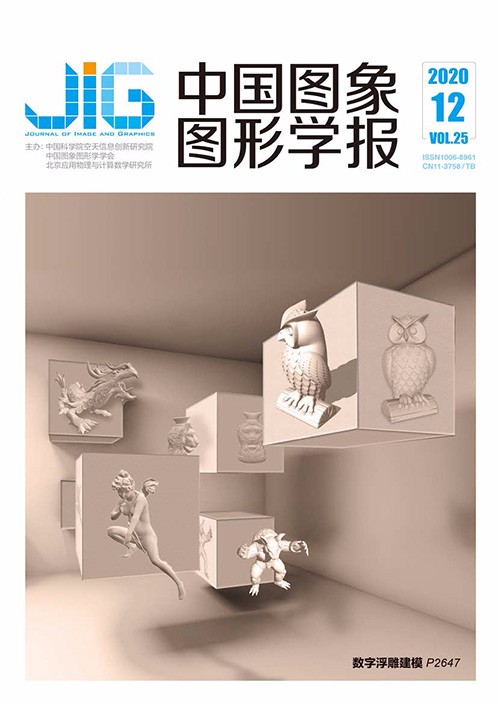
光场显著性检测研究综述
摘 要
显著性检测一直是计算机视觉领域的关键问题,在视觉跟踪、图像压缩和目标识别等方面有着非常重要的应用。基于传统RGB图像和RGB-D (RGB depth)图像的显著性检测易受复杂背景、光照、遮挡等因素影响,在复杂场景的检测精度较低,鲁棒的显著性检测仍存在很大挑战。随着光场成像技术的发展,人们开始从新的途径解决显著性检测问题。光场数据记录着空间光线位置信息和方向信息,隐含场景的几何结构,能为显著性检测提供可靠的背景、深度等先验信息。因此,利用光场数据进行显著性检测得到了广泛关注,成为研究热点。尽管基于光场数据的显著性检测算法陆续出现,但是缺少对该问题的深刻理解以及研究进展的全面综述。本文系统地综述了基于光场数据的显著性检测研究现状,并进行深入探讨和展望。对光场理论以及用于光场显著性检测的公共数据集进行介绍;系统地介绍了光场显著性检测领域的算法模型和最新进展,从人工设计光场特征、稀疏编码特征和深度学习特征等方面进行全面阐述及分析;通过4个公共光场显著性数据集上的实验数据对不同方法的优缺点进行比较和分析,并结合实际应用指出当前研究的局限性与发展趋势。
关键词
Review of saliency detection on light fields
Liu Yamei, Zhang Jun, Zhang Xudong, Sun Rui, Gao Jun(School of Computer Science and Information Engineering, Hefei University of Technology, Hefei 230601, China) Abstract
Saliency detection is an important task in the computer vision community, especially in visual tracking, image compression, and object recognition tasks. However, the extant saliency detection methods based on RGB or RGB depth (RGB-D) often suffer from problems related to complex backgrounds, illumination, occlusion, and other factors, thereby leading to their inferior detection performance. In this case, a solution for improving the robustness of saliency detection results is warranted. In recent years, commercial and industrial light field cameras based on micro-lens arrays inserted between the main lens and the photosensor have introduced a new method for solving the saliency detection problem. The light field not only records spatial information but also the directions of all incoming light rays. The spatial and angular information inherent in a light field implicitly contains the geometry and reflection characteristics of the observed scene, which can provide reliable prior information for saliency detection, such as background clues and depth information. For example, the digital refocus technique can divide the light field into focal slices that focus at different depths. The background clues can be obtained from the focused areas. The light field contains effective saliency object occlusion information. Depth information also be obtained from the light field in various ways. Therefore, using light fields offers many advantages in dealing with problems related to saliency detection. Although saliency detection based on light fields has received much attention in recent years, a deep understanding of this method is yet to be achieved. In this paper, we review the research progress on light field saliency detection to build a foundation for future studies on this topic. First, we briefly discuss light field imaging theory, light field cameras, and the existing light field datasets used for saliency detection and then point out the differences among various datasets. Second, we systematically review the extant algorithms and the latest progress in light filed saliency detection from the aspects of hand-crafted features, sparse coding, and deep learning. Saliency detection algorithms based on light field hand-crafted features are generally based on the idea of contrast. These algorithms detect salient regions by calculating the feature difference between each pixel and super pixel as well as between other pixels and other super pixels. Saliency detection based on sparse coding and deep learning follow the same idea of feature learning, that is, they use image feature coding or the outstanding feature representation abilities of convolution network to determine the salient regions. By analyzing the experimental data on four publicly available light field saliency detection datasets, we summarize the advantages and disadvantages of the existing light field saliency detection methods, summarize the recent progress in light-field-based saliency detection and point out the limitations in this field. Only a few light field datasets are presently available for saliency detection, and these datasets are all generated by light field cameras based on micro-lens array, which has a narrow baseline. Therefore, the effective utilization of various information present in a light field remains a challenge. While saliency detection algorithms based on light fields have been proposed in previous studies, saliency detection based on light fields warrant further study due to the complexity of real scenes.
Keywords
|



 中国图象图形学报 │ 京ICP备05080539号-4 │ 本系统由
中国图象图形学报 │ 京ICP备05080539号-4 │ 本系统由